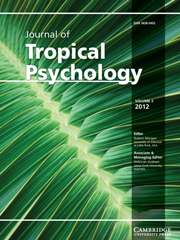No CrossRef data available.
Article contents
Awareness and comprehension of the right to silence in Queensland, Australia
Published online by Cambridge University Press: 07 October 2014
Abstract
Awareness and comprehension of the Queensland Police Service (QPS) caution was investigated in a group (N = 140) of university students in Queensland, Australia. Awareness was measured before participants were shown and read aloud the QPS caution; comprehension was then assessed. Participants also completed the Australian Legal Awareness Questionnaire (ALAQ) to ascertain their knowledge of legal matters more generally. The results show that participants were generally unaware of their legal rights and had difficulty comprehending the right to silence caution. Overall, the study demonstrates that while many participants reported understanding the QPS caution, the reality is that most did not. This is a concerning outcome considering that people already marginalised by virtue of lower education and literacy levels (many Indigenous Australians residing in Far North Queensland, for example) are further seriously disadvantaged by failing to comprehend the police caution.
- Type
- Articles
- Information
- Copyright
- Copyright © The Author(s) 2014




